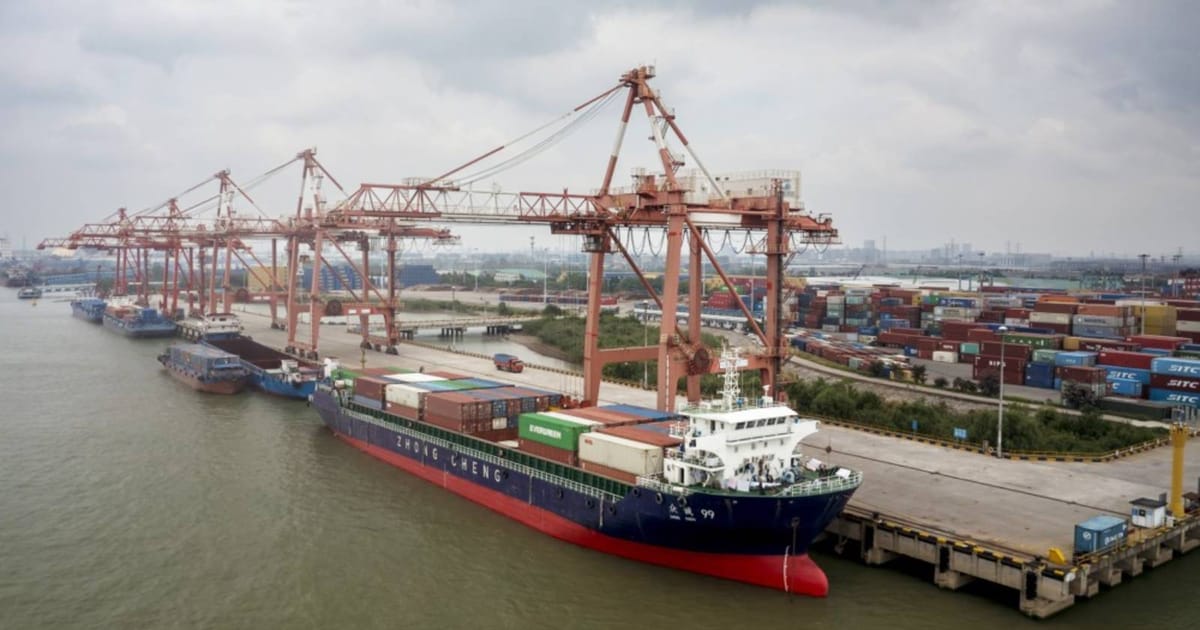
Southeast Asian nations are in a bind. While Asean exporters face increasing pressure from US tariffs and heightened scrutiny of transshipments, their domestic markets are increasingly being dominated by Chinese goods.
Alleviating the twin pressures will require a mix of defence and offense.
On the surface, relations between the US and Southeast Asian countries are improving.
President Donald Trump‘s recent participation in the US-Asean summit produced four trade deals, as well as agreements with Thailand and Malaysia to diversify critical minerals supply chains.
However, America’s punitively high 40% tariffs on the loosely defined transshipment of Chinese goods clearly indicate that the Trump administration wants Asean economies to limit their participation in China-centric supply chains.
However, that’s a difficult ask.
Southeast Asian nations are an integral part of China‘s various goods supply chains, and China’s investment in the region has helped to drive the rapid growth of Asean exports to the US.
Additionally, the region is heavily dependent on China for services trade.
Out of Asean’s US$25 billion services trade surplus in 2023, US$9 billion was with China alone.
Some Asean economies, like Thailand, are hoping to expand that surplus as Chinese tourism returns to pre-pandemic levels.
Antagonizing Beijing is thus clearly not in Asean’s best interest.
However, aligning more closely with the US could do just that.
Chinese Premier Li Qiang recently told a regional summit that Asia needed to “close ranks” in response to “bullying” from foreign countries.
Deindustrialisation fears
Southeast Asia also faces another trade-related problem: growing local opposition to the flood of Chinese imports.
The fact that China’s Asean exports are now larger than those to the US is often pointed to by market-watchers as evidence that China has mitigated the impact of US tariffs by replacing the US consumer market with Asean ones.
On the one hand, that’s correct.
While a portion of Chinese exports to Asean are intermediate goods slated for re-processing for other markets, including the US, a significant portion constitute finished products targeted for Asean consumers.
However, the spike in Chinese imports is creating competition with local manufacturers, and has already raised concerns about deindustrialisation in Indonesia and Thailand.
Job destruction in Indonesia was one factor behind the recent intense political protests there.
Mitigation strategies
Southeast Asian countries are adopting a multi-pronged strategy to escape being squeezed by the two superpowers.
First, there is defence. The surge in cheap Chinese imports arising from industrial overcapacity has already prompted several Asean nations to impose anti-dumping duties on certain commodities or to commence investigations.
Moreover, while the Asean bloc recently signed an updated free trade agreement with China, the region is also seeking to assuage US concerns by adopting more stringent customs and origin verification systems to address increasingly rigorous US tariff rules on transshipments from China.
Next, there is offense. Southeast Asian countries are working to enhance their manufacturing capabilities to promote trade diversification and movement away from transshipment.
Looking forward, Asean’s exports to the US are expected to increasingly be driven by investments in advanced manufacturing, originating not just from China but from Japan and Korea.
Other initiatives encouraging greater Asean integration are also being launched.
The Master Plan on Asean Connectivity 2025 framework was recently adopted, which seeks to enhance physical infrastructure, digital networks, seamless logistics and migration between Asean nations.
However, such schemes have been attempted previously with limited success.
For example, the Master Plan for Asean Connectivity 2010 fell short of expectations as a consequence of tight investment restrictions and the challenges of getting skilled workers to move.
The acceleration of intra-Asean integration and intra-regional trade also continues to be stymied by wide disparities in Asean income levels and differences in the ability to handle complex and sophisticated production processes.
In fact, despite the various plans adopted to strengthen trade among Asean countries in recent years, intra-regional trade has actually been declining since 2013, while trade with China has grown rapidly.
Ultimately, antagonising China risks the potential loss of Chinese manufacturing FDI and reduced access to the country’s large services market.
Yet, over the long term, tilting towards the US doesn’t seem to be the natural choice, especially when America is looking to reshore manufacturing and disengage from China-centric supply chains.
For now, Asean seems to be caught between a rock and a hard place.






